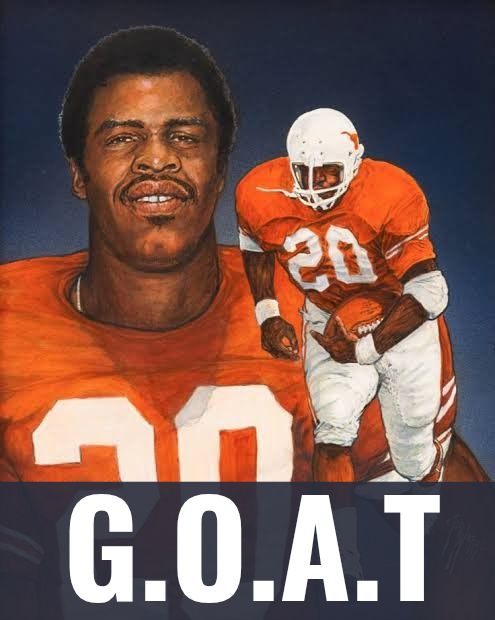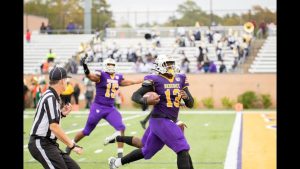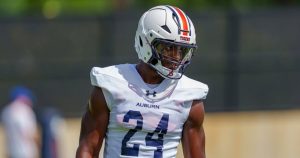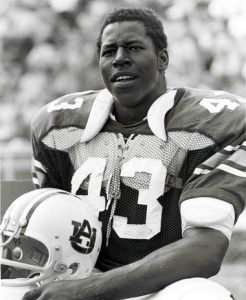
In a stunning and emotional announcement that has captivated the college football world, ESPN released its definitive list of the Greatest of All Time (G.O.A.T.) in college football history. And to the roar of burnt orange faithful and Longhorn Nation, one name stood above all others: Earl Campbell.
The “Tyler Rose,” already enshrined in college football lore, was officially crowned as the greatest player in the sport’s history—edging out legendary figures like Herschel Walker (Georgia), Tim Tebow (Florida), and Archie Griffin (Ohio State) in a tightly contested vote that factored in fan input, expert analysis, historical data, and career impact.
This declaration is more than just a title; it’s a validation of one of college football’s most dominant and inspiring careers. Let’s take a deep dive into the legacy of Earl Campbell, why he earned the top spot, and how he stacks up against the other icons who were in the running.
The Tyler Rose: A Legacy Cemented
Born in Tyler, Texas, Earl Campbell came to the University of Texas in 1974 and immediately made an impression. Standing 5’11”, 230 pounds, Campbell combined brute power with surprising speed. He wasn’t just a bulldozing back—he was a force of nature. Over the course of four seasons (1974–1977), Campbell amassed 4,443 rushing yards, 40 touchdowns, and countless unforgettable moments.
But it was his 1977 Heisman Trophy-winning season that crystallized his place in history. That year, Campbell rushed for 1,744 yards and 18 touchdowns, carrying the Longhorns to an 11-0 regular season and a No. 1 national ranking heading into the Cotton Bowl.
More than the numbers, it was how Campbell played that resonated. He ran angry, breaking through arm tackles like they were paper, dragging defenders for extra yards, and leaving a trail of bruised would-be tacklers in his wake. Coaches feared him. Players respected him. Fans adored him.
ESPN’s Evaluation Process
The G.O.A.T. announcement came as part of ESPN’s yearlong project, “College Football 150: The Greatest,” celebrating the sport’s most impactful figures, games, teams, and moments. The network assembled a panel of over 150 experts—including Hall of Fame coaches, former players, analysts, and historians—while also incorporating fan votes across digital platforms.
The final four came down to:
- Earl Campbell (Texas)
- Herschel Walker (Georgia)
- Tim Tebow (Florida)
- Archie Griffin (Ohio State)
Each player brought a unique case:
- Walker was an unstoppable freshman and led Georgia to a national title in 1980.
- Tebow was the ultimate competitor and leader, winning two national titles and a Heisman.
- Griffin remains the only two-time Heisman winner in history.
But Campbell’s singular dominance, unmatched physicality, and emotional connection to the game proved decisive.
Comparing the Final Four
Let’s break down how Earl Campbell ultimately triumphed in this battle of legends.
Earl Campbell – Texas Longhorns (1974–1977)
- Rushing Yards: 4,443
- Touchdowns: 40
- Heisman Trophy: 1977
- Accolades: Doak Walker Award (precursor), First-Team All-American, College Football Hall of Fame
Campbell did more with less than others in the running. Unlike Walker or Tebow, he didn’t have a national championship to bolster his résumé. Yet he elevated Texas football to new heights in the post-Darryl Royal era, shouldering the program with relentless will and otherworldly talent.
Herschel Walker – Georgia Bulldogs (1980–1982)
- Rushing Yards: 5,259
- Touchdowns: 52
- Heisman Trophy: 1982
- Championships: 1980 National Title
Walker’s combination of speed and strength defined SEC football in the 1980s. His freshman season is still regarded as one of the most impressive debuts in college football history.
Tim Tebow – Florida Gators (2006–2009)
- Passing Yards: 9,285
- Rushing Yards: 2,947
- Total Touchdowns: 145
- Heisman Trophy: 2007
- Championships: 2 (2006, 2008)
The ultimate leader and a symbol of modern college football, Tebow revolutionized the quarterback position. His passion, leadership, and ability to impose his will on games made him the face of the Florida dynasty.
Archie Griffin – Ohio State Buckeyes (1972–1975)
- Rushing Yards: 5,589
- Touchdowns: 26
- Heisman Trophies: 2 (1974, 1975)
- Bowl Games: 4 Rose Bowls
Griffin’s back-to-back Heismans remain an unparalleled achievement. His consistency and excellence were hallmarks of the Woody Hayes-era Buckeyes.
Why Earl Campbell Stands Alone
While all four players are worthy of enshrinement in the pantheon of college football greatness, Earl Campbell stood out for several reasons:
1. Dominance in an Era of Defense
Campbell played in the mid-70s when defenses reigned supreme. Offensive schemes were more conservative, and running lanes were hard-fought. Yet Campbell routinely shredded elite defenses with a combination of strength, balance, and determination.
2. Impact on the Program
Texas was transitioning during Campbell’s time. With Darrell Royal easing into retirement, the program needed a hero. Campbell became that hero, putting the Longhorns back in national contention and inspiring generations of future stars.
3. Cultural and Historical Resonance
As one of the first major Black stars at Texas during a time of societal transition, Campbell carried more than the ball—he carried the weight of expectation and the burden of representation. His success helped forge a more inclusive path for others who followed.
4. Style of Play
No other back in college football history quite looked or ran like Earl Campbell. His thighs reportedly measured 36 inches. Tacklers bounced off him like rubber. He was the epitome of toughness, and even in an era known for gritty, physical football, Campbell redefined physicality.
The Reaction from the Football World
Following ESPN’s announcement, tributes flooded in from across the sports landscape:
- Mack Brown, current UNC head coach and former Texas head coach: “There’s never been anyone like Earl. He made football in Texas what it is today.”
- Ricky Williams, another Heisman-winning Texas back: “I wore #34 because of Earl. He was the blueprint, the standard.”
- Tim Tebow, always gracious, responded on social media: “Honored to be in the conversation. Earl Campbell was a legend’s legend. Congrats, #34.”
Even Archie Griffin, whose dual Heismans once seemed like an unassailable claim to GOAT status, offered praise: “Earl earned this. He was a true warrior and one of the greatest to ever play.”
A Fitting Honor for a Humble Giant
Earl Campbell, now 70 and battling mobility challenges from years of football wear and tear, gave a heartfelt response through his son, Tyler Campbell:
“Daddy always said he played for the love of the game and to make his mama proud. This honor means the world to our family. Thank you to Longhorn Nation and to everyone who voted.”
Campbell’s humility has always been as powerful as his game. Despite the accolades, he’s remained grounded in faith, family, and community. His post-football work—especially advocating for those with spinal cord injuries and his commitment to mental health awareness—has only added to his legacy.
The Enduring Power of #34
For Texas fans, Earl Campbell has always been more than a football player. He’s a symbol of strength, pride, and resilience. This crowning moment reaffirms what they’ve known for decades: Earl Campbell is not just a legend—he’s the greatest to ever do it.
And now, with ESPN’s blessing, the rest of the college football world agrees.
Final Word
In a sport filled with passion, pageantry, and larger-than-life heroes, it’s never easy to anoint a single player as the greatest of all time. But when the dust settled and the stories were told, one name echoed louder than all others: Earl Campbell.
Not just a running back. Not just a Heisman winner. But the G.O.A.T.
And in Austin, Texas—and beyond—the Tyler Rose will bloom forever.





